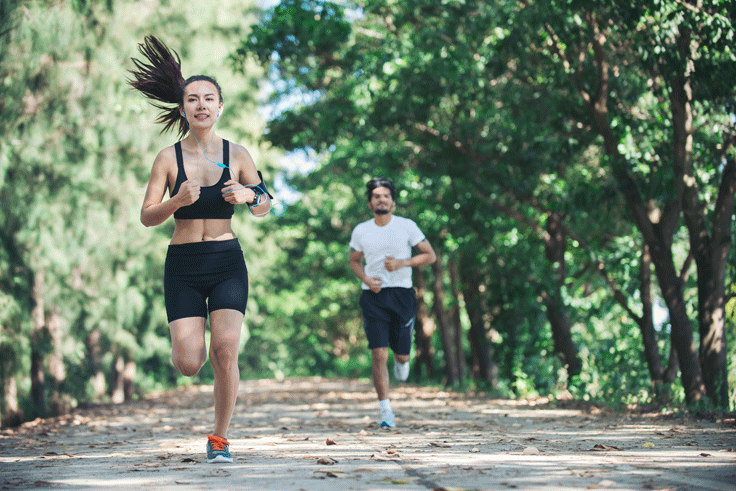Back pain is one of the most common complaints we see amongst runners in the clinic. Of course, back pain is not the only complaint seen in running. It can be followed by a long list of lower limb disorders such as Achilles tendinitis, runner’s knee, ankle, and foot pain.
The reason for this is that running is a high impact sport, which means that there is a great deal of shock/ force that travels through the body. Research has shown us that each time your heel strikes the ground when running, the force of the heel strike may be as much as two to three times your own body weight!
Here are a few tips to help you run safely:
New to running?
If you’re fresh off the couch, give yourself enough time to train and prepare. Doing too much too soon can lead to common overuse injuries such as shin splints, ITB problems and knee injuries. Even if you’re a pretty active person but a new runner, you’ve probably got the cardiovascular fitness but haven’t mastered the biomechanics of impact running so you should still give yourself six to eight weeks of running a couple of times per week on a regular basis before jumping into a half marathon training program.
Warm up and cool down
Warm up with a three to five minute gentle walk followed by a five minute run-walk. It is crucial to stretch but save the deep release moves for a post-run release. Then, gradually ease into running slowly for another five minutes before picking up the pace. You should try to warm up your joints during the warm up. You can try knees ups, heel kicks or side stepping.
After you’ve done your main session run, cool down by reducing the speed gradually, over the course of five minutes, to a slow jog and then a walk. This prevents blood pooling, nausea and dizziness. Now is the time to do some deep static stretches for your legs.
Trainers
A good pair of running shoes can make all the difference, providing the support and shock absorption your body needs to prevent injuries and perform your best. Invest in a quality pair of running shoes, and make sure to replace them at the right time. Some people say you should replace them at around 300 miles but it is better to rely on how much wear there is in the tread, or whether or not the sides of the soles are wrinkling.
Once you start getting niggles in your knees, hips or ankles, it’s probably because your trainers are long past their use-by-date.
Technique
I always get asked about different running techniques and which is best – my advice is to ditch the fads, and run in a way that is natural for you. Look ahead, keeping your upper body relaxed and upright. Maintain a short stride length; land mid-foot and work towards a quicker cadence. By bracing your abdominal muscles, your lower back will be stabilised and there will be a reduction in the amount of wasted energy in your form, and therefore less chance of injury. With those pieces in place, your body will automatically settle into its gait and you’ll find that natural rhythm your body craves.




